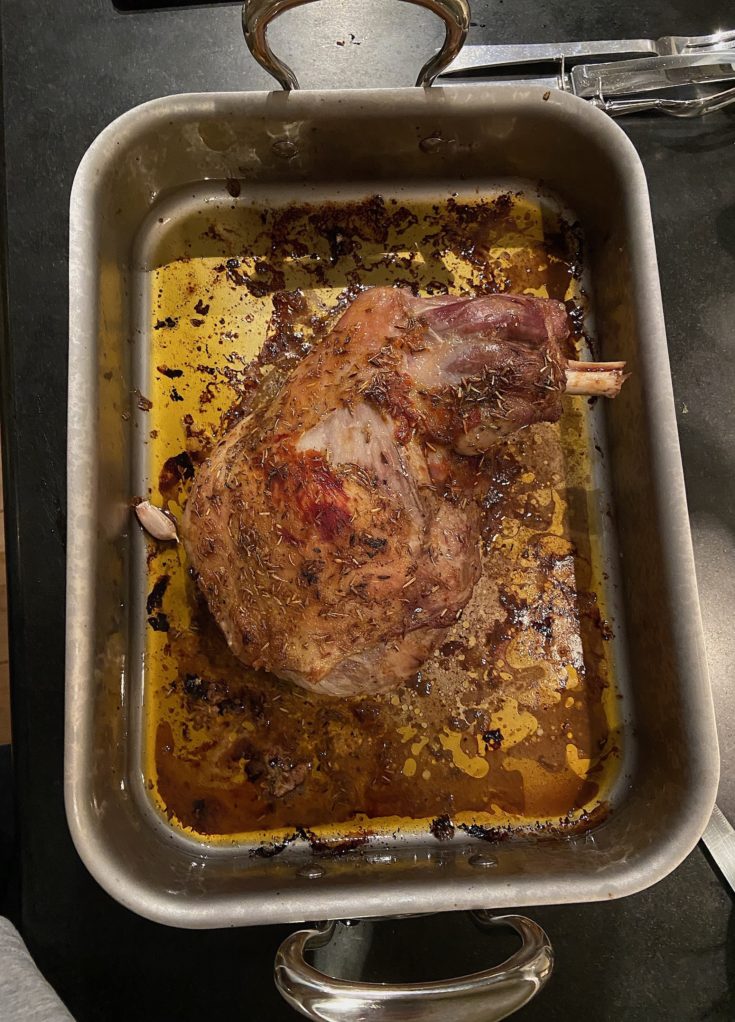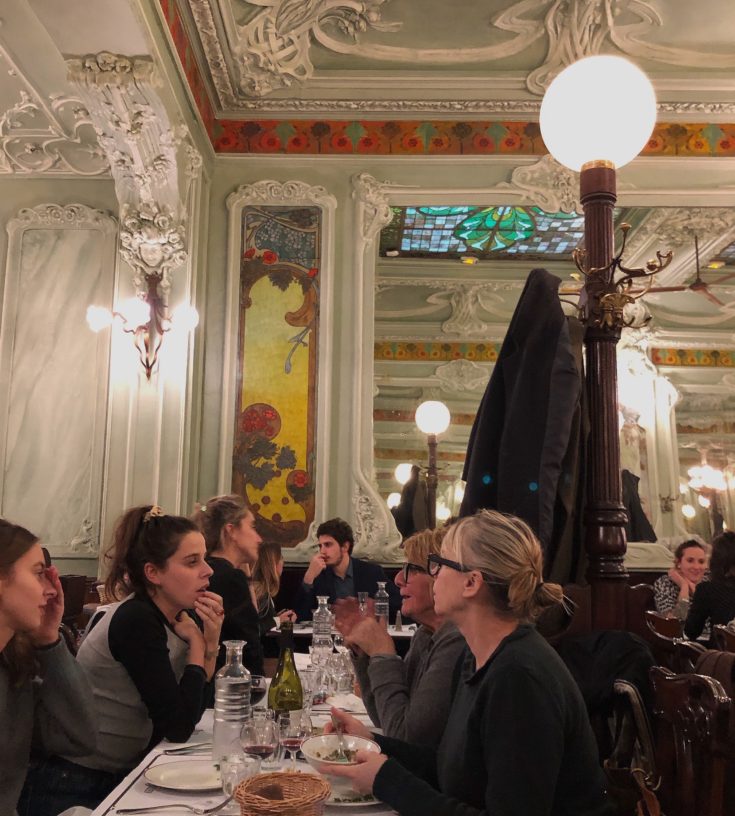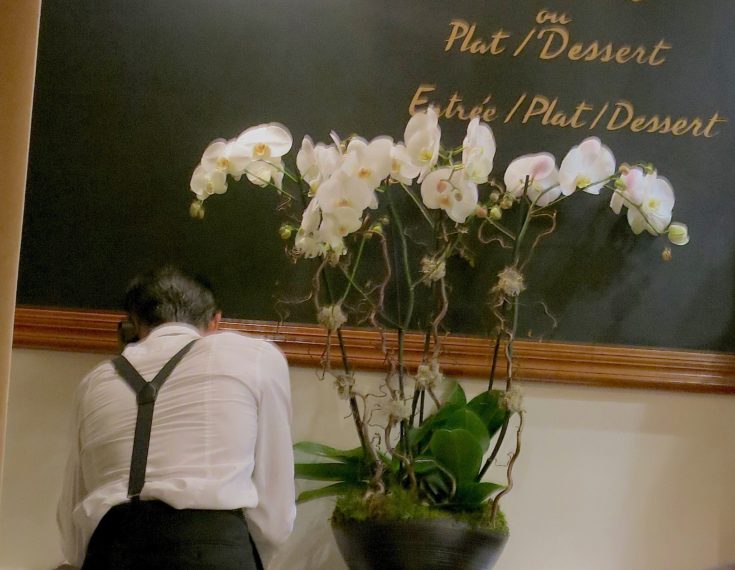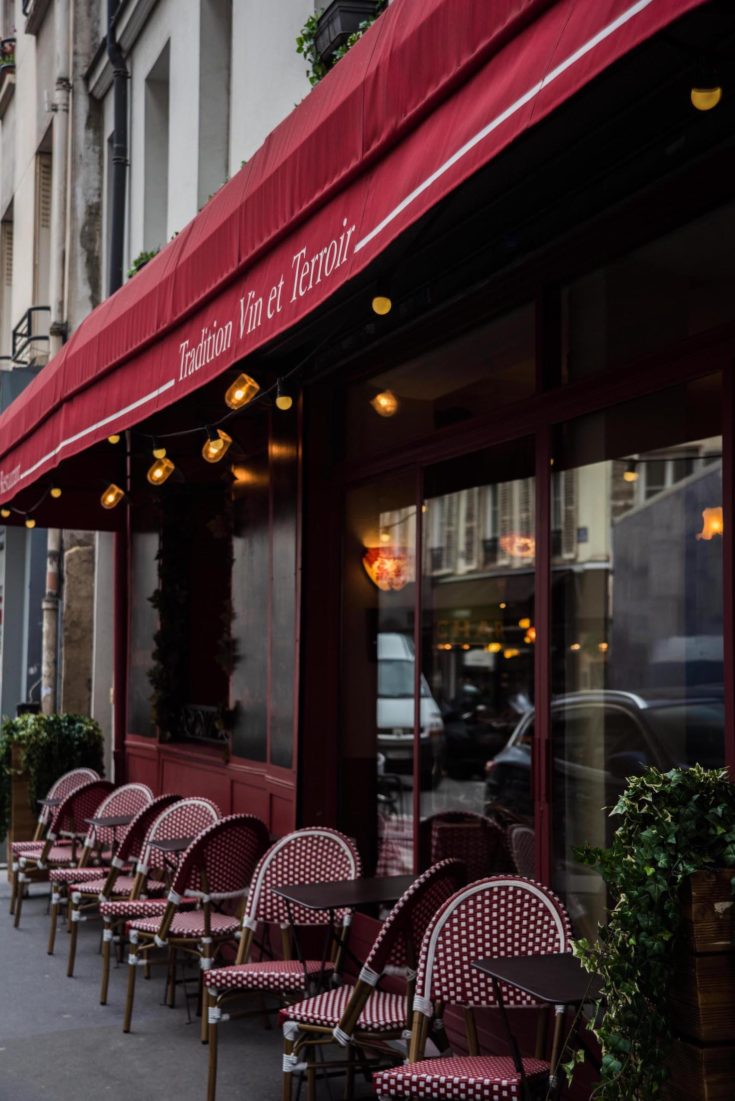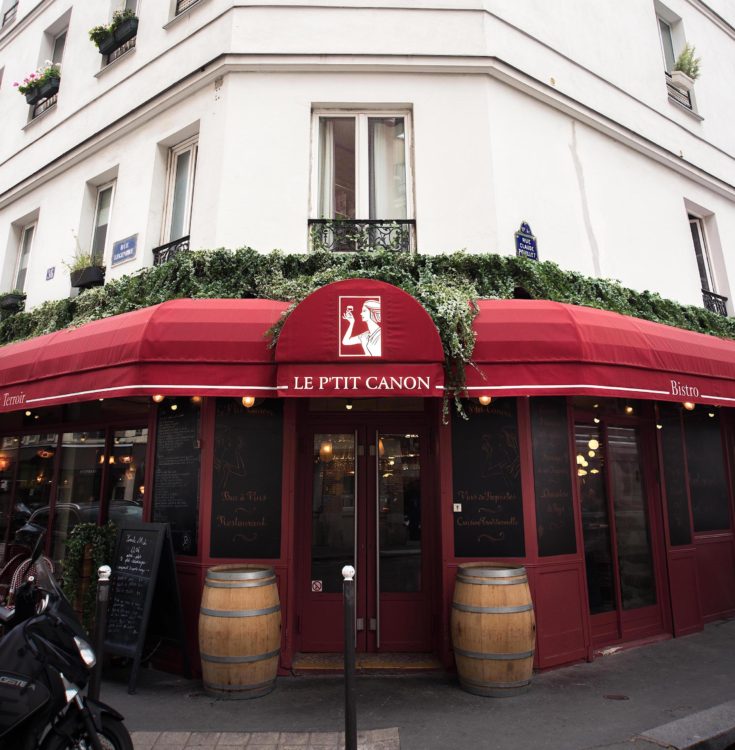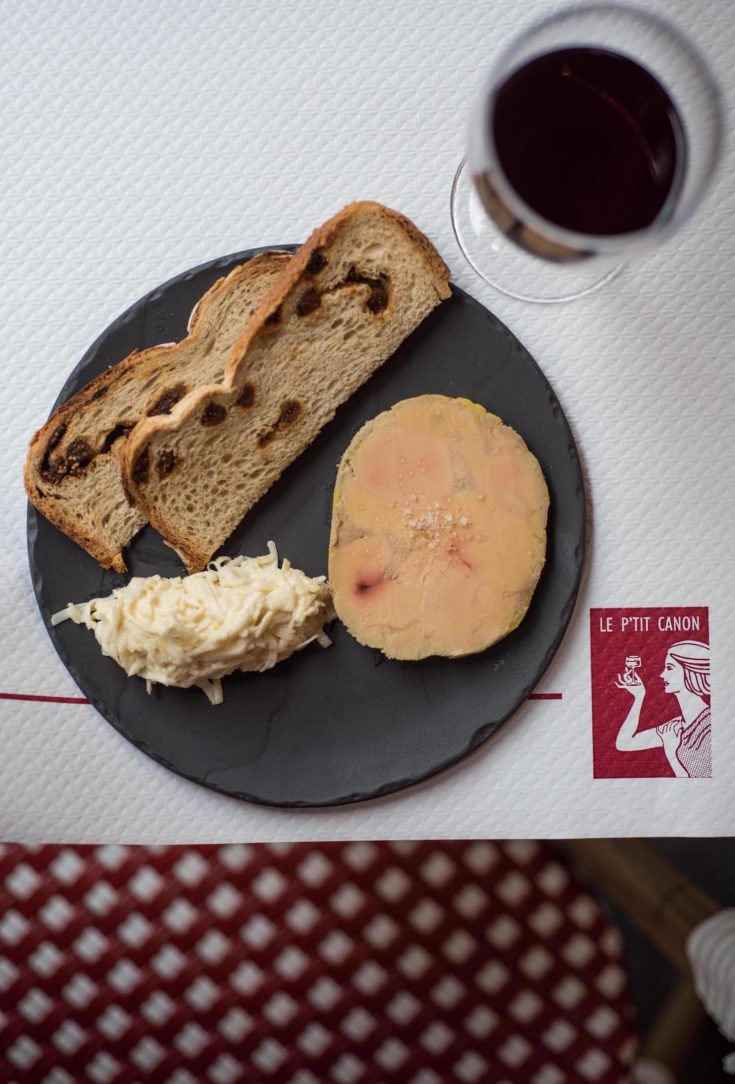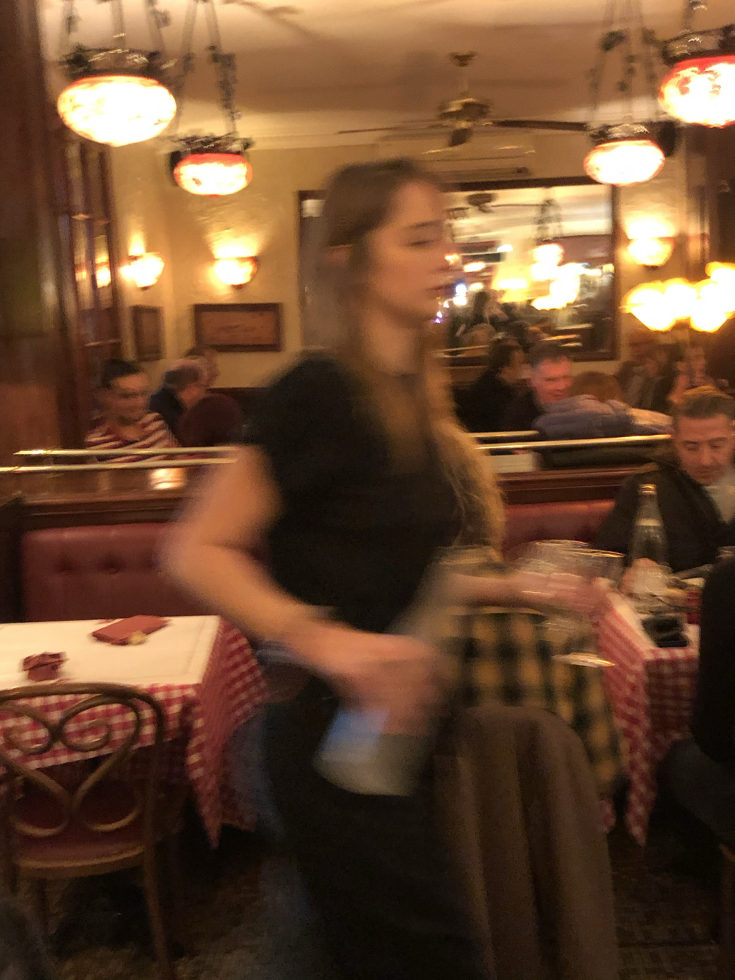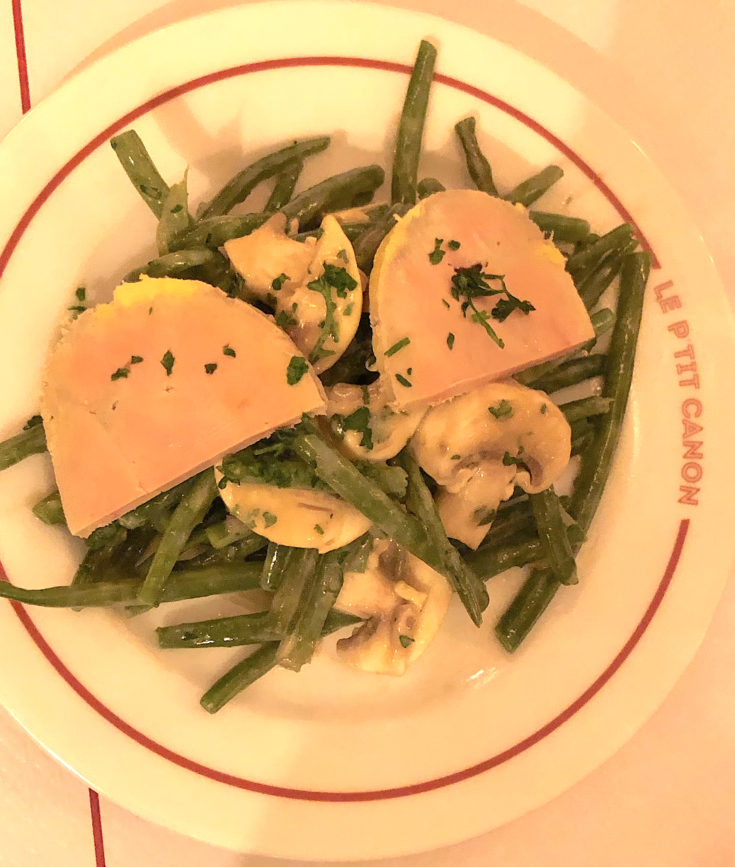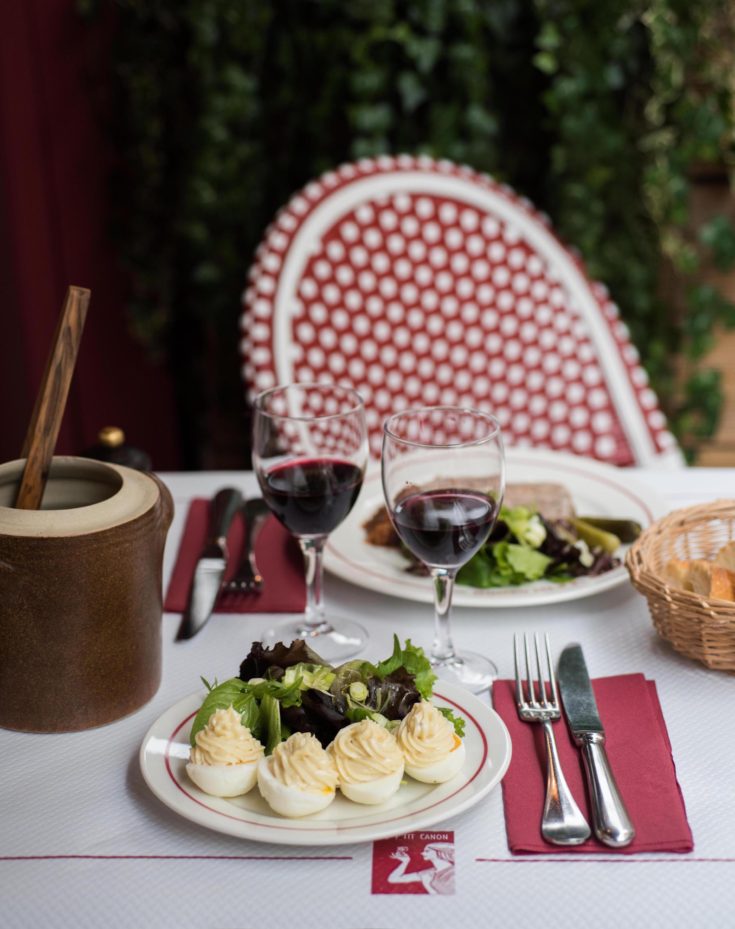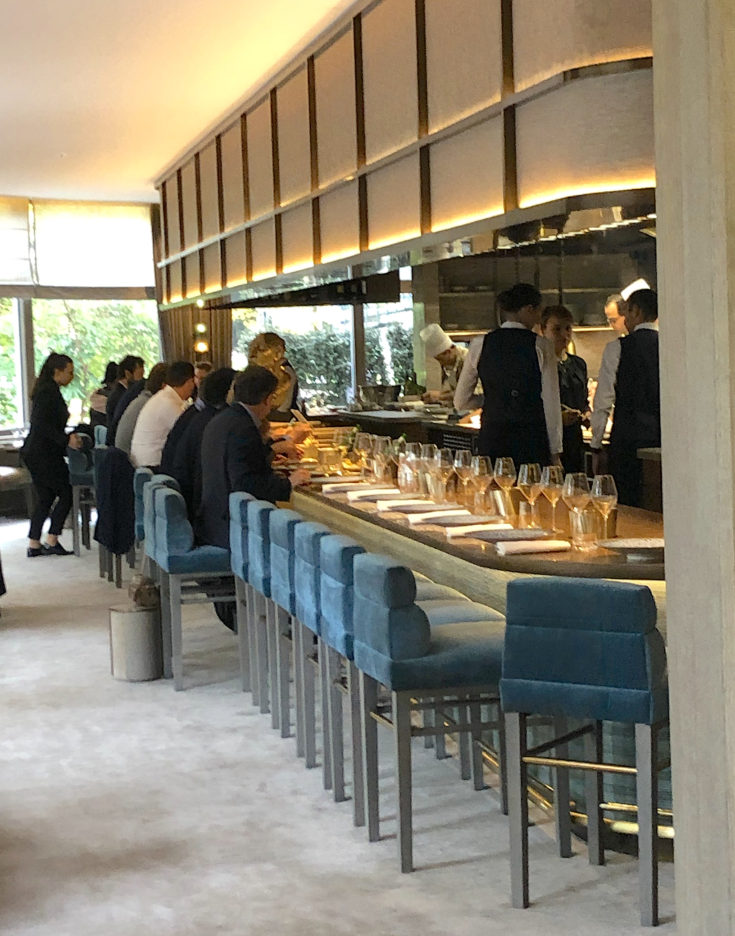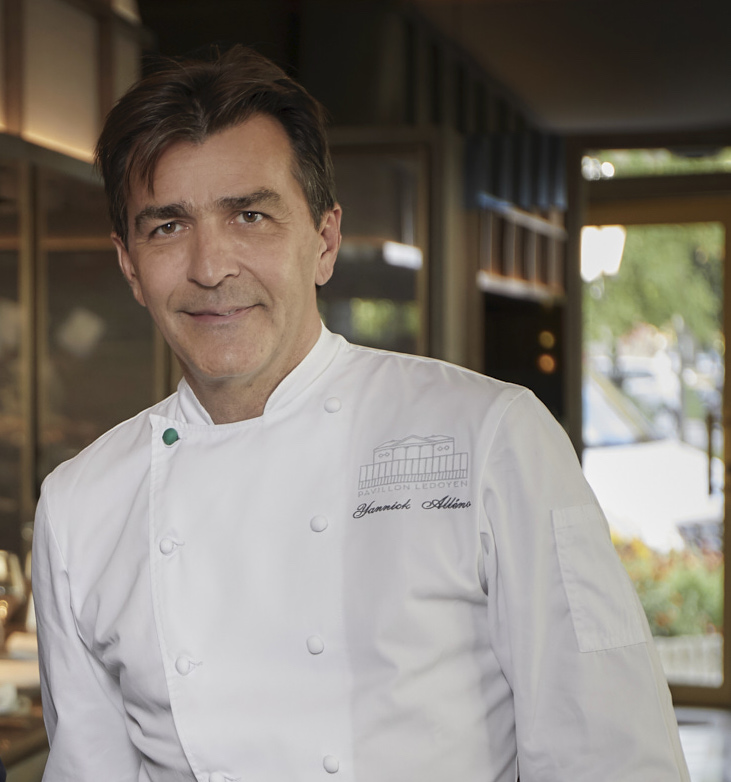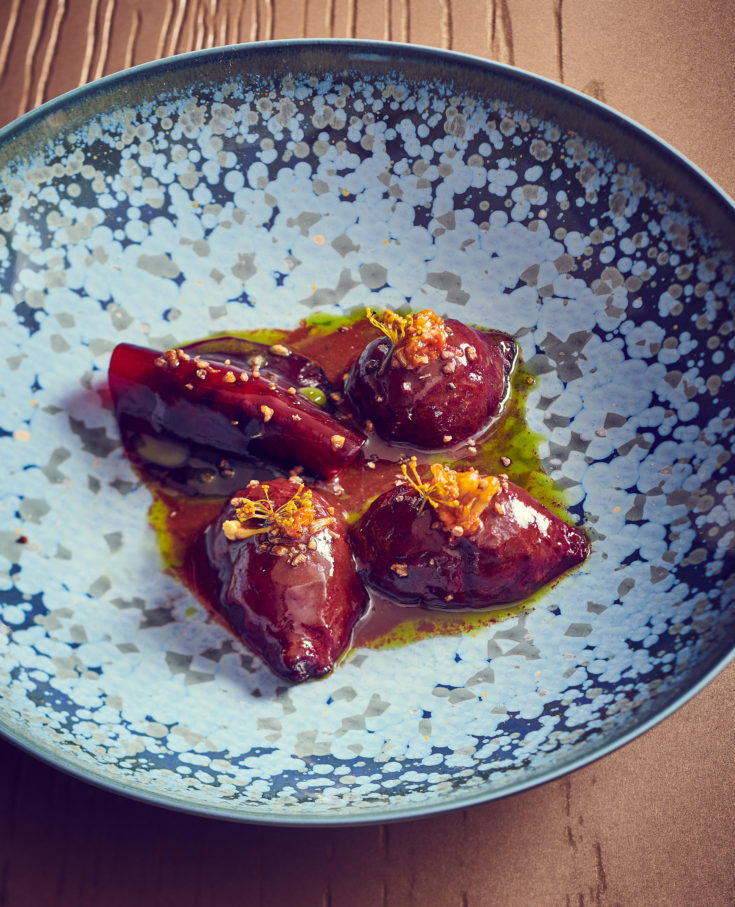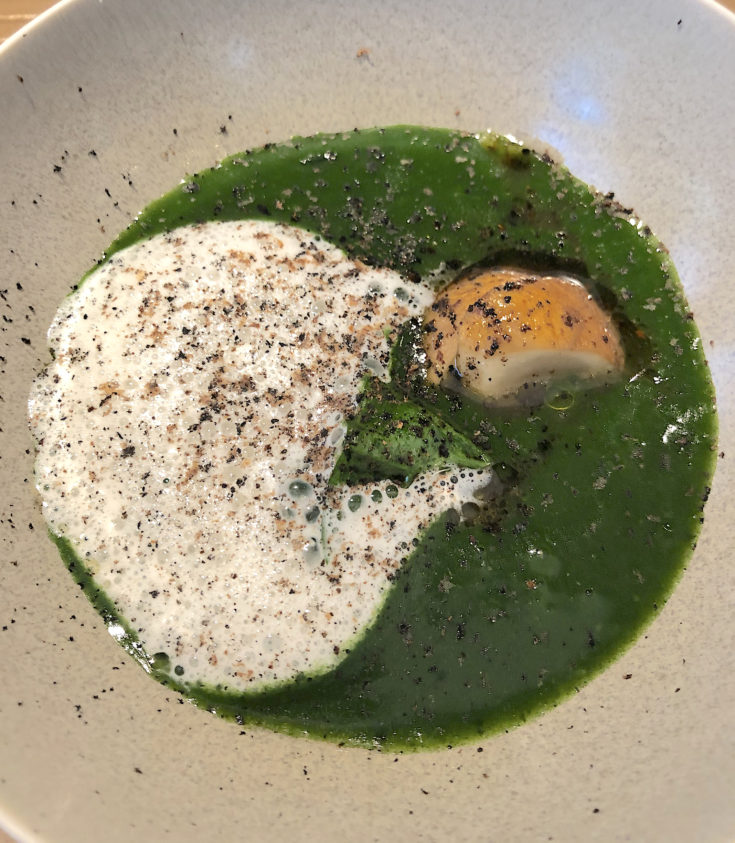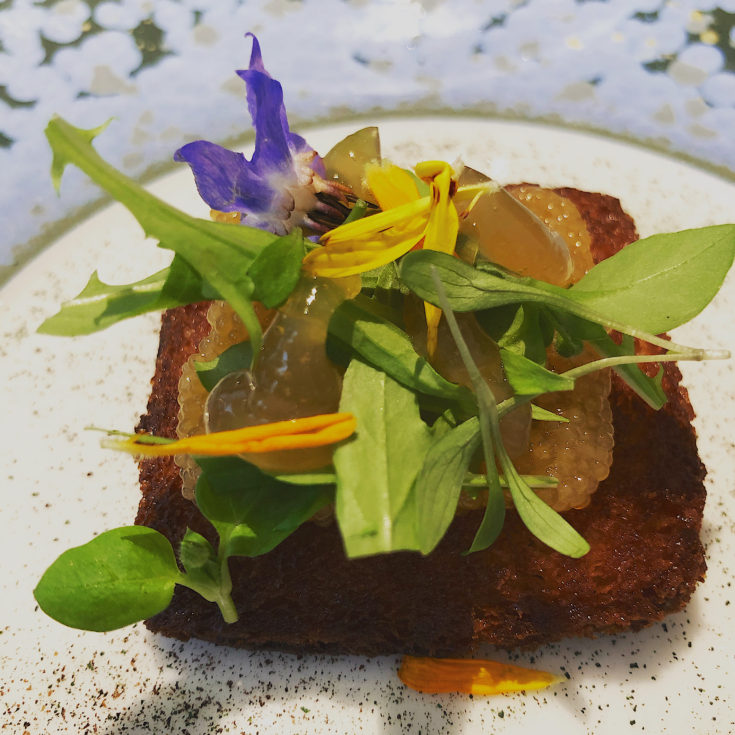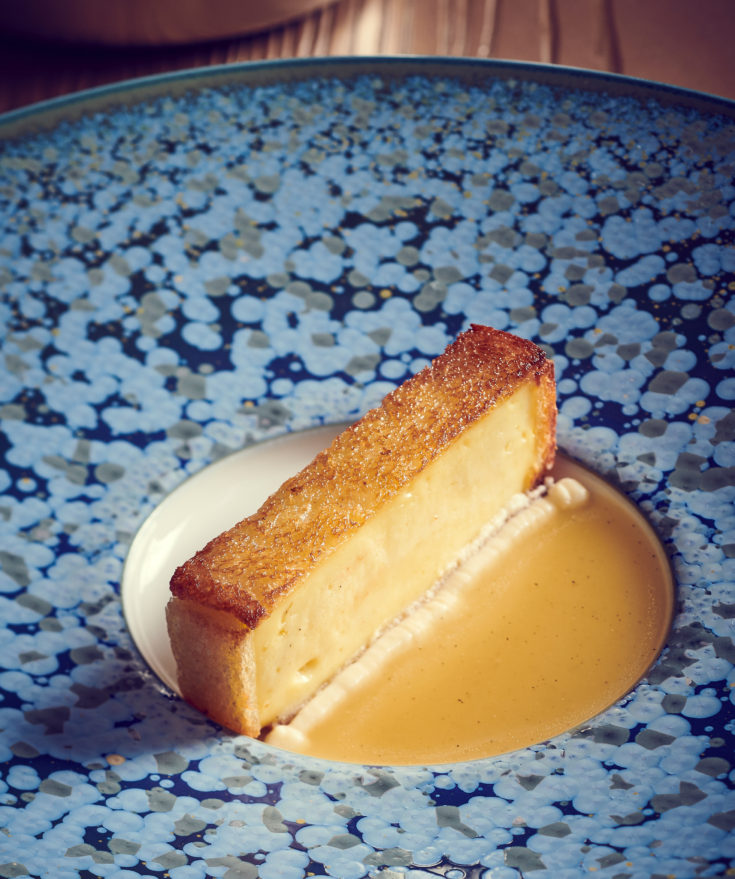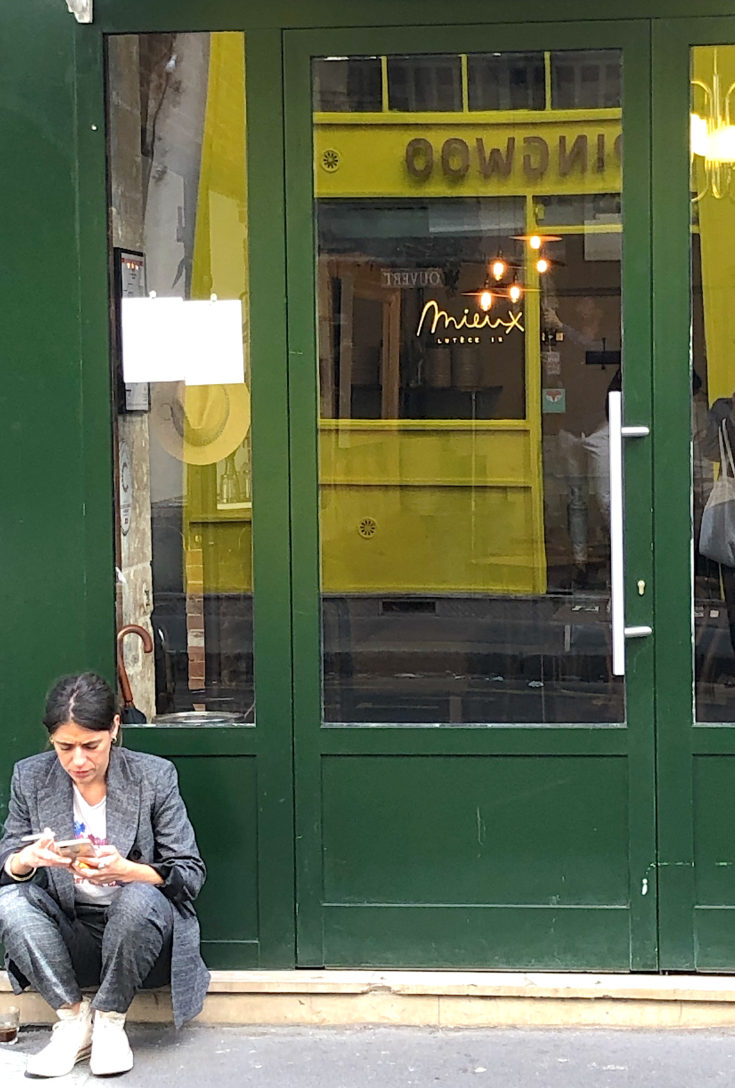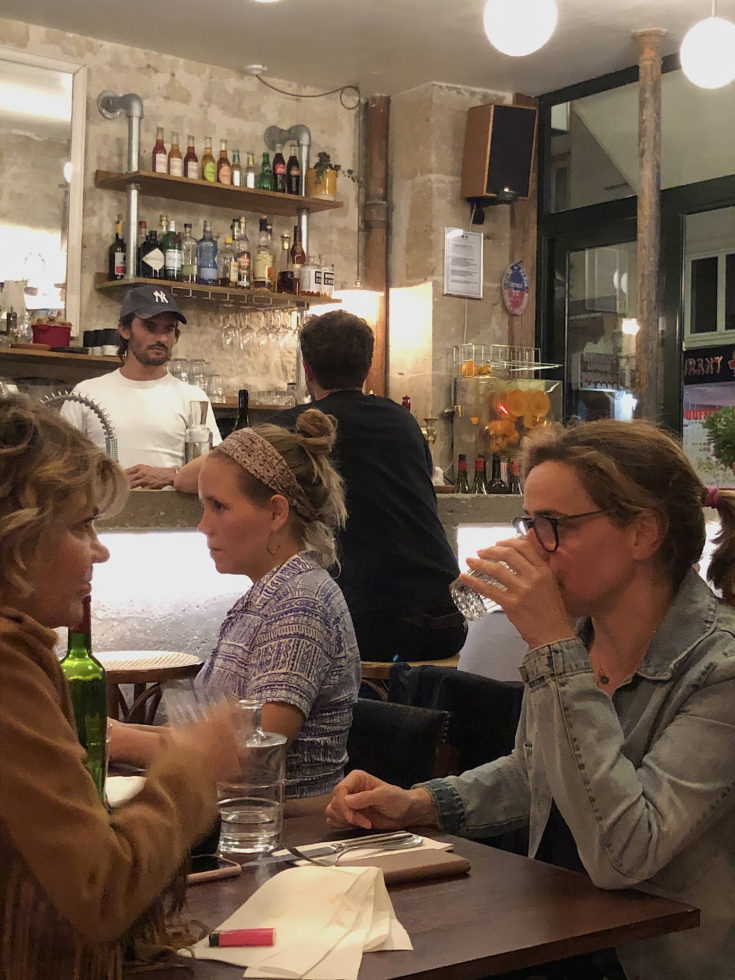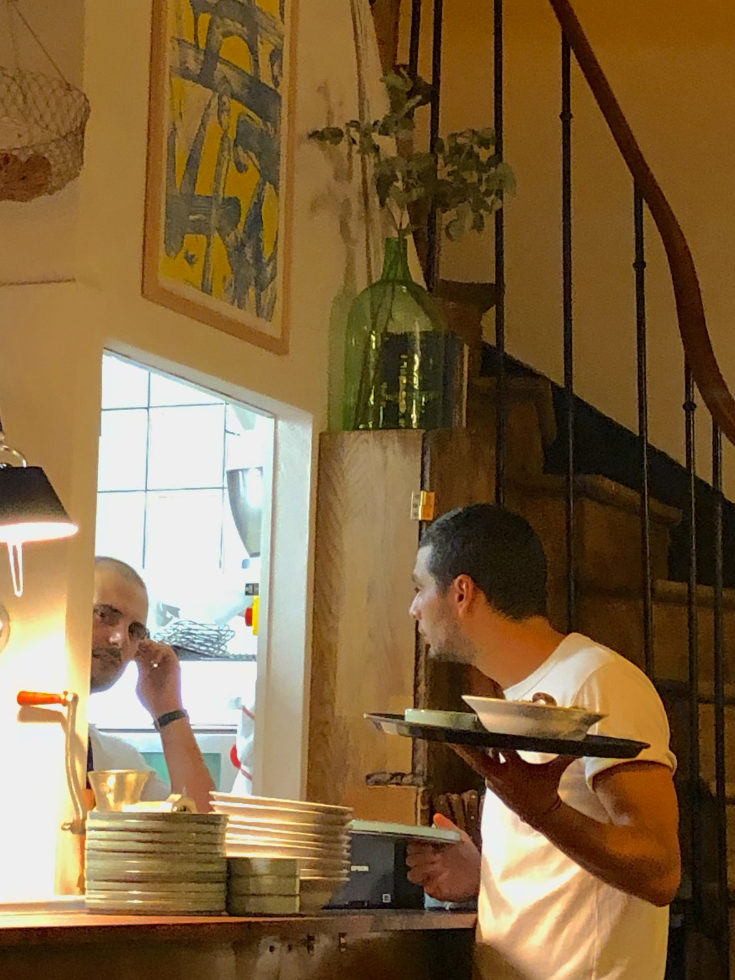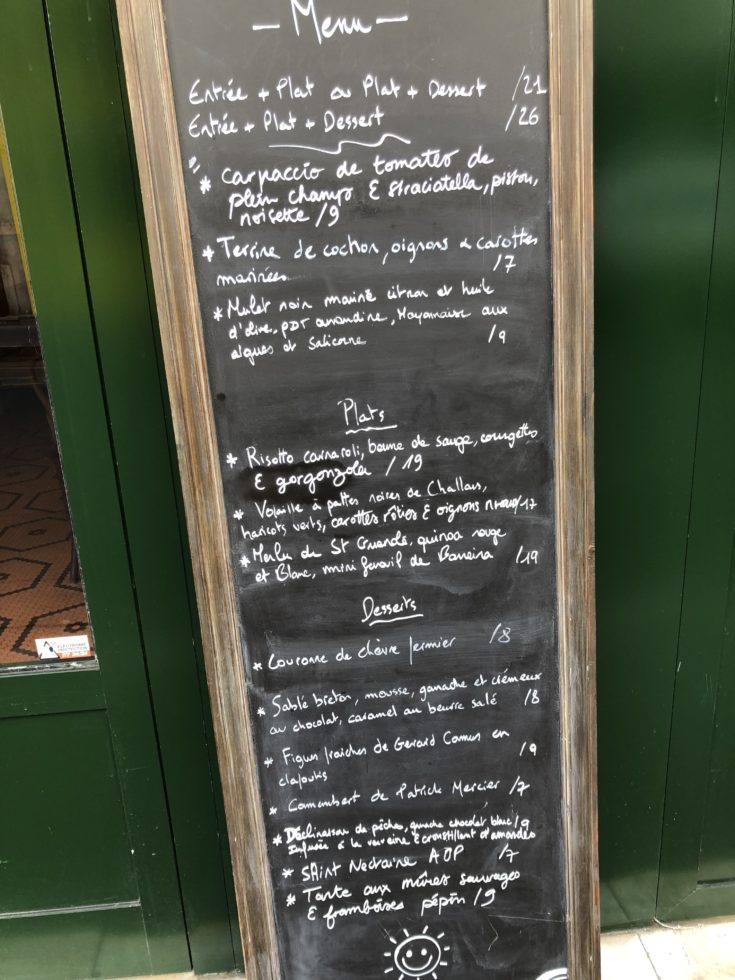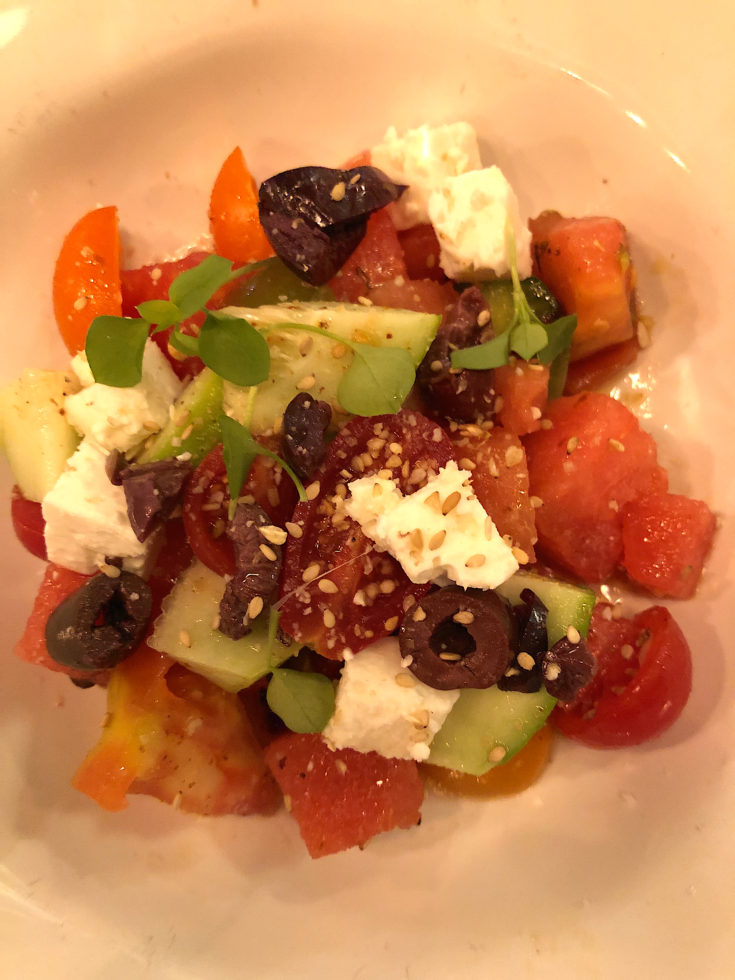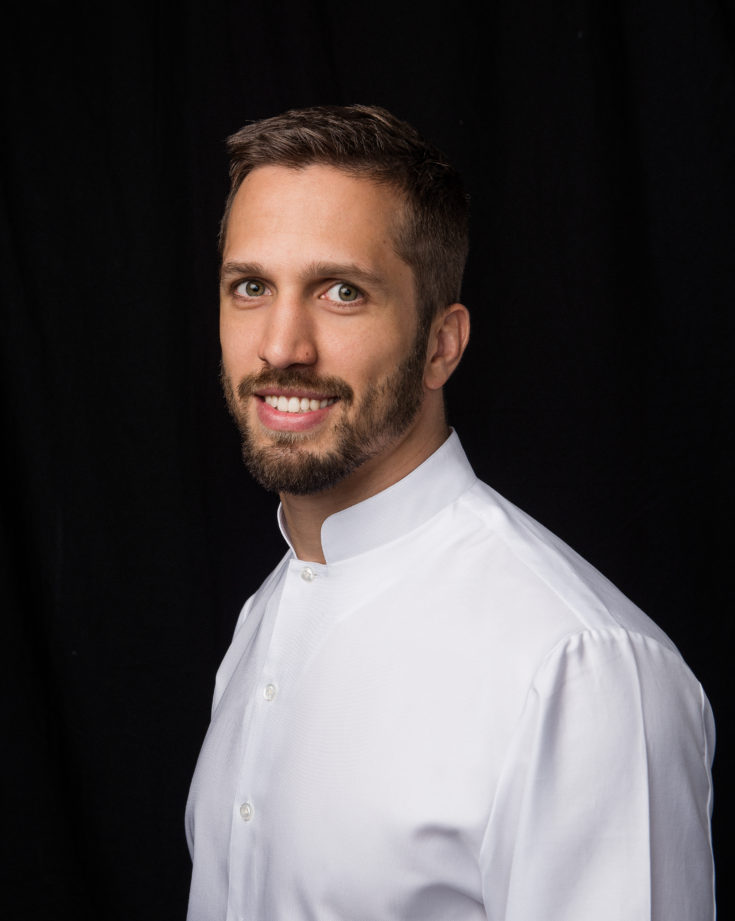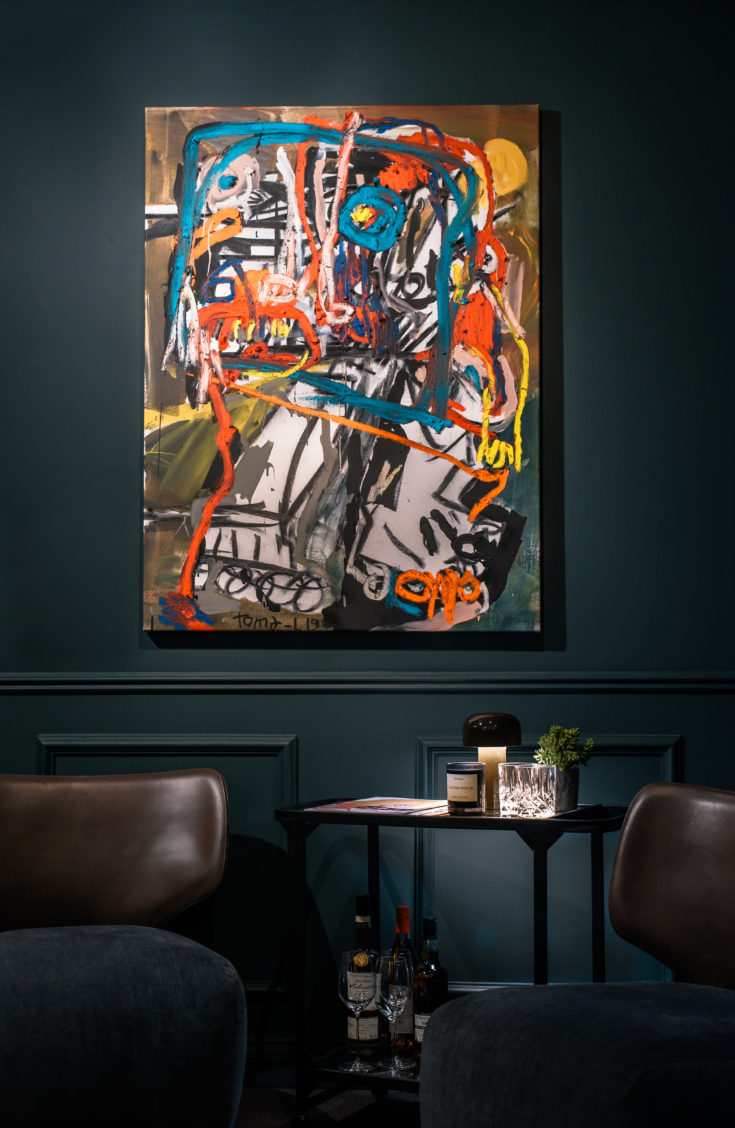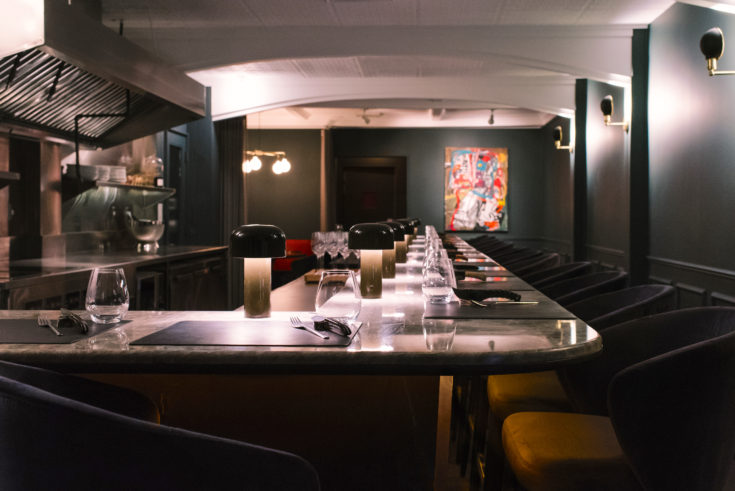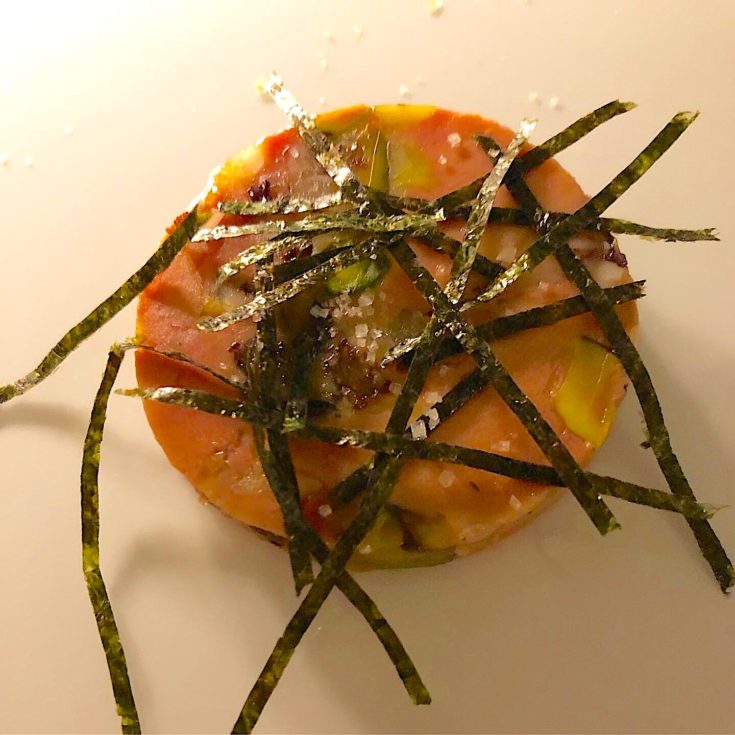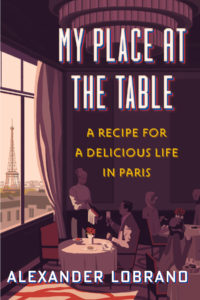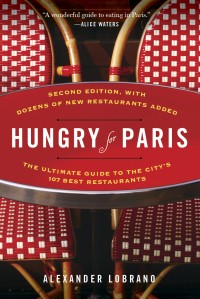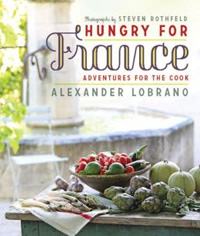
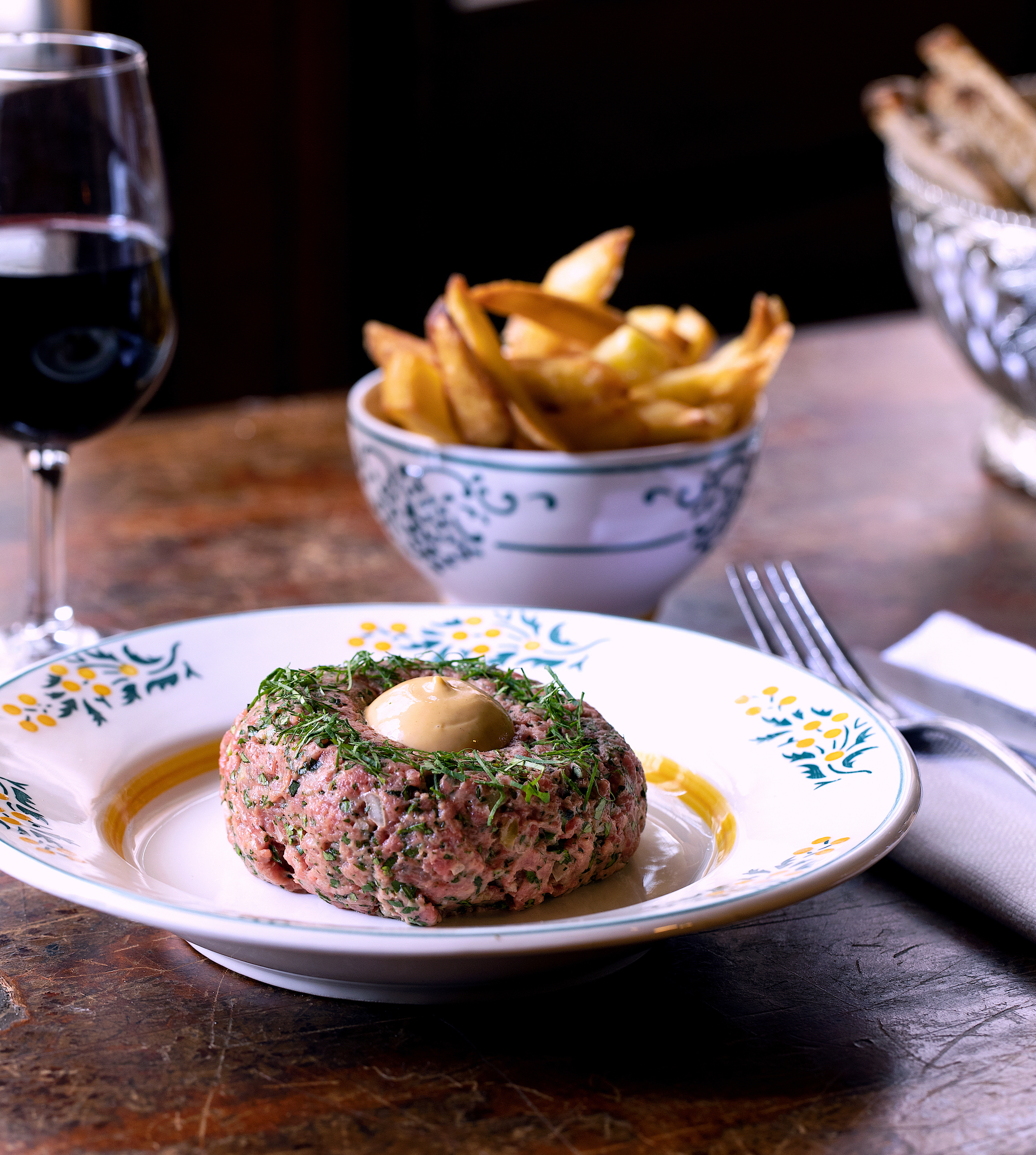

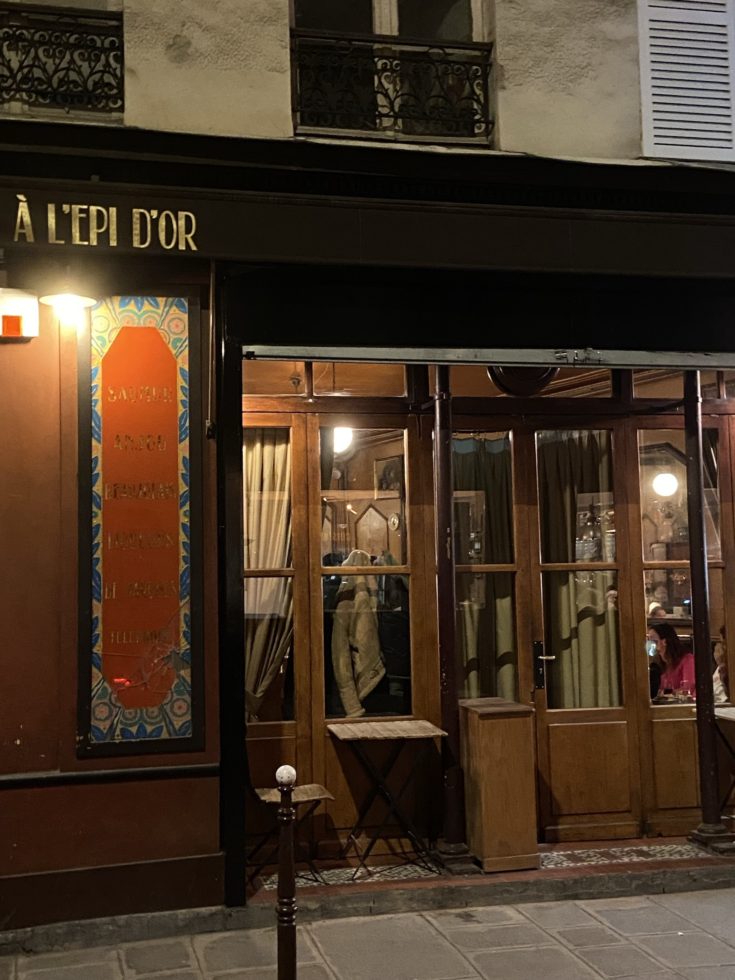

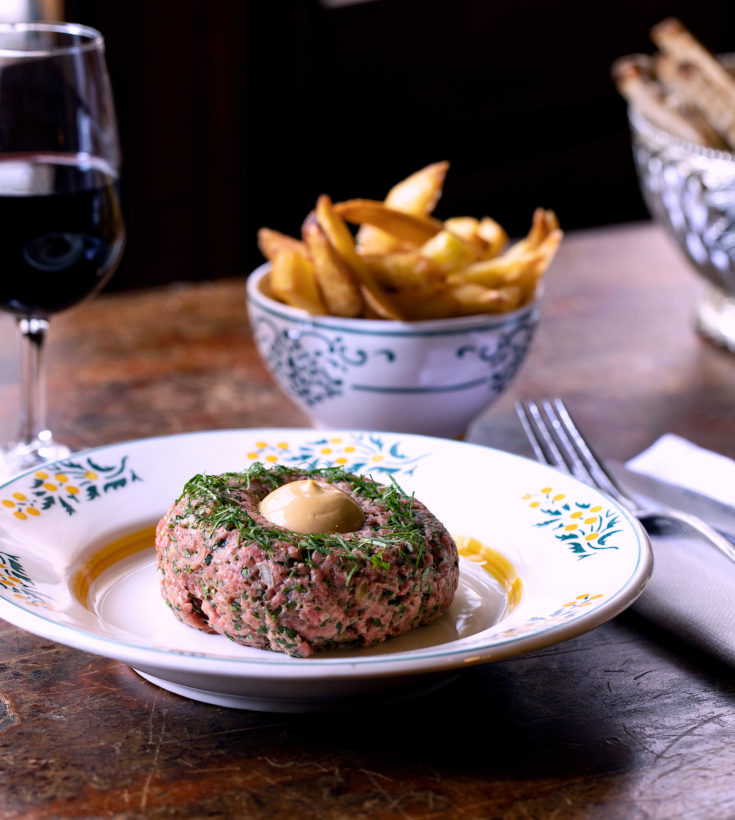
 A L’Epi d’Or, a solid old neighbourhood bistro that opened on the edge of Les Halles in 1880, has mercifully been spared the ignominious fate of too many traditional Paris bistros in an ever gentrifying city: becoming a clothing store. Sepia-tinted by decades of Gauloises and Gitanes, this sturdy old place with a cracked tile floor, a big zinc bar, and globe lamps overhead has instead become the object of the wisely gentle, puckishly reverent and shrewdly restrained culinary intentions of chef Jean-François Piège.
A L’Epi d’Or, a solid old neighbourhood bistro that opened on the edge of Les Halles in 1880, has mercifully been spared the ignominious fate of too many traditional Paris bistros in an ever gentrifying city: becoming a clothing store. Sepia-tinted by decades of Gauloises and Gitanes, this sturdy old place with a cracked tile floor, a big zinc bar, and globe lamps overhead has instead become the object of the wisely gentle, puckishly reverent and shrewdly restrained culinary intentions of chef Jean-François Piège.
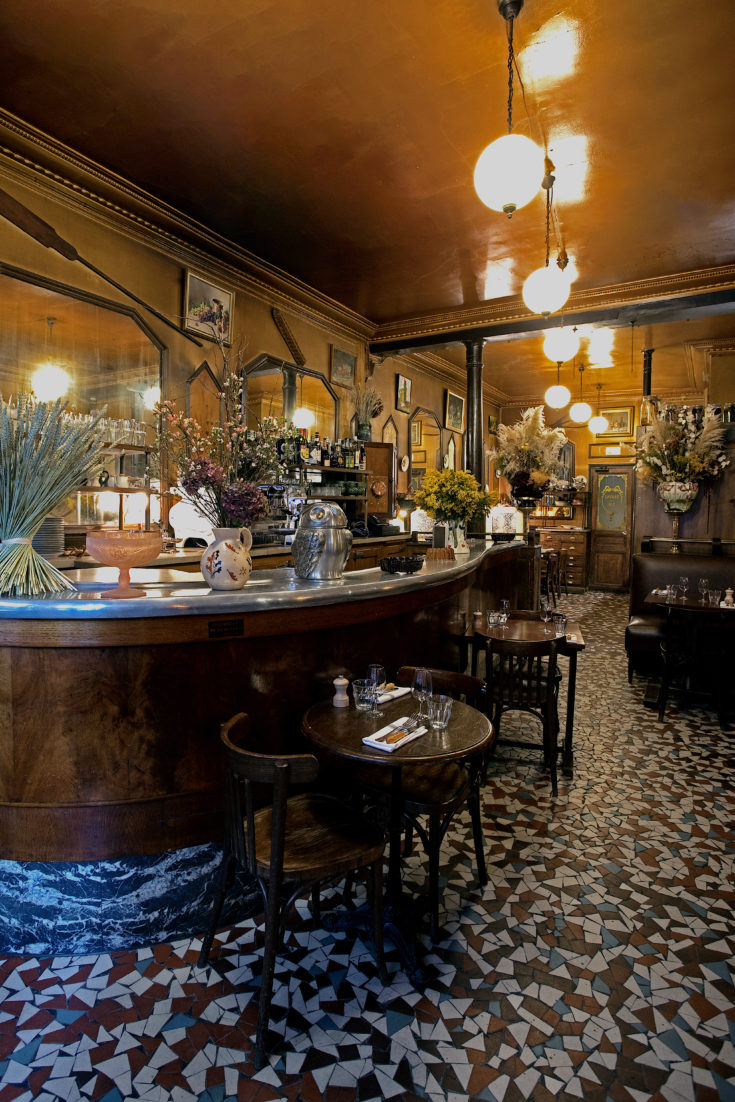
“I didn’t want to reinvent A L’Epi d’Or, I just wanted to make it better,” says Piège, who lives nearby and has a deep affection for this kind of historic and profoundly Parisian address. “I want the tastes of honest old-fashioned French cooking to survive as everyday food, not as part of some expensive nostalgic special-occasion meal,” adds the chef, who has two Michelin stars at his Le Grand Restaurant, and also owns and runs three other restaurants, Clover Grill, Clover Green, and La Poule au Pot.
This remark struck a real chord with me, because in some Paris neighbourhoods today, it’s easier to find a bowl of ramen or an Italian meal than it is French bistro cooking. For a variety of reasons, this kitchen, the bedrock level of Gallic gastronomy, is struggling, and I’m not talking about bistronomie, a.k.a. modern bistro cooking, but workaday traditional bistro cooking like the dishes you find on the menu at A L’Epi d’Or. To wit, dining out in Paris has changed, and changed a lot, since thirty years ago, when eating anything other than French food in Paris was very much the exception to the rule. Sure, we’d go for the occasional Chinese, Vietnamese or North African meal, but our daily food bread and everything else that came to the table with it was French in those days.
Now if you consider the modern urban gastronomic cannon, or those same popular dishes that are served in major cities all over the world–sushi, ramen, cheeseburgers, tacos, burritos, pizza, pasta, tapas, ceviche, etc., almost none of them are French with the possible exception of quiche. Traditional French cooking based on braising and the slow, careful construction and concentration of flavours has become an outlier, because it’s time consuming behind the kitchen door and also because it has wrongly acquired a reputation for being heavy, even ‘unhealthy.’ The reality is that it’s nowhere near as time consuming as a global recipe culture driven by semi-hysterical promises of fast and easy cooking might lead you to believe, and it’s also not only deeply nourishing but profoundly satisfying.
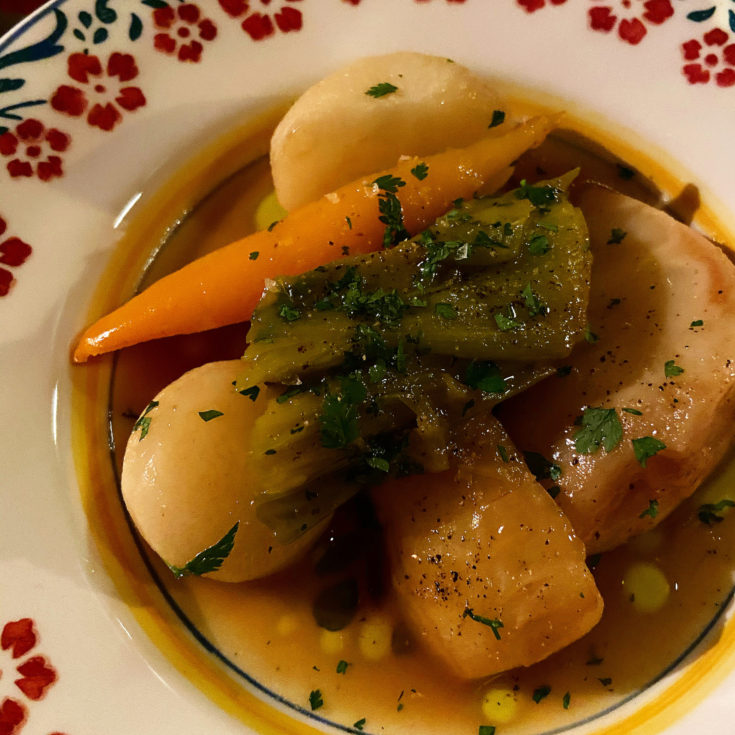
This is what I thought when I tucked into my first course of legumes pot au feu, or leeks, carrots, turnips, celeriac, parsnip and potato that had been cooked in beef bouillon as part of a pot au feu. The succulent vegetables had a light gloss of bovine richness that didn’t mask their natural tastes or textures, and the pool of sauce they came in–bouillon with a few drops of olive oil, some chopped parsley and a superbly redolent gently fruity red wine vinegar was a supremely Gallic garnish. What made this dish work so well, though, was the resonance of the vinegar, which had a percussive freshness that was fascinating. When I chatted with Piège later in the meal, he explained that the red-wine vinegar was homemade, with a mother of vinegar that was constantly fed with leftover red wine. “It’s the youth of the vinegar that makes it mellow and so good with cooked vegetables,” he explained.
To be sure, my first memory of A L’Epi d’Or had nothing to do with what I ate here. Just a couple of months after I’d arrived in Paris to work as an editor in the offices of fashion publisher Fairchild Publications, I was invited for lunch on a rainy winter day by a famous Paris fashion designer. I’d never met him before, but when I stepped through the door of this restaurant, I was certain it couldn’t possible be the man with butterscotch coloured hair and a black leather bomber jacket over a black muscle T shirt who was the only other customer in the dining room. He nodded at me, and I nodded back and then I spoke to the older woman behind the bar, giving her the name of the designer. With a pursed smile, she nodded towards the man in the bomber jacket.
He was drinking Champagne when I sat down with him, and we chatted briefly–he’d just returned from Tokyo that morning, which is why less than a minute later he almost fell asleep while reading the menu. Then he told me he’d was going to the men’s room, so I pulled back the table to let him out, and glancing at him walking to the back of the room, I was astonished to see that the back of his black leather pants was cut out to display his bare ass. Seeing me see him, the woman behind the bar barked with laughter.
“Et dis donc, Monsieur!” (Say there, Mister!), she said and guffawed. “Il n’est pas tres subtile celui!” (He’s not very subtle, that one), she cackled again, and then he returned.
“I just needed a little powder to perk myself up,” he said when he sat down. I nodded vaguely. “Would you like some?” he asked, offering me some cocaine.
“No, thanks, I’m happy with my marinated leeks,” I replied, and he rolled his eyes. “And you go to church every Sunday, too?” he snorted.
“No,” I said. “I’m Protestant,” as if that explained anything.
“Oh, God, you’re a Protestant, too. They have no imagination, which makes them terrible sex. Most Catholics are a little kinky, even if they don’t know it.” And so it went. But I liked the unpretentious bistro food, the room, and the crowd.
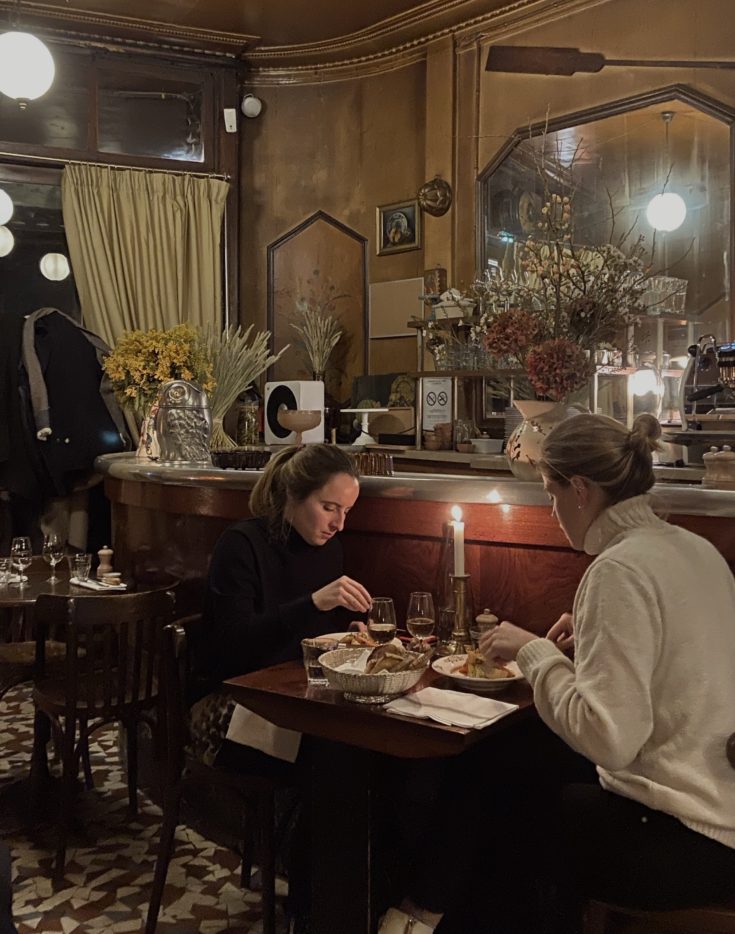
The motley crowd of traveling salesman, market workers, night-club goers and the occasional pair of convivial and immaculately made up streetwalkers was always one of the best things about A L’Epi d’Or, and on this first experience of its resurrection, it was too soon to guess at the eventual sociological composition of the restaurant’s new clientele except to say that the sex business has moved online in Paris and traditional bistro cooking seems to be developing an eager new following among the Bobo (bohemian bourgeois) couples who have colonized the ancient side streets of Les Halles.
Continue reading…


